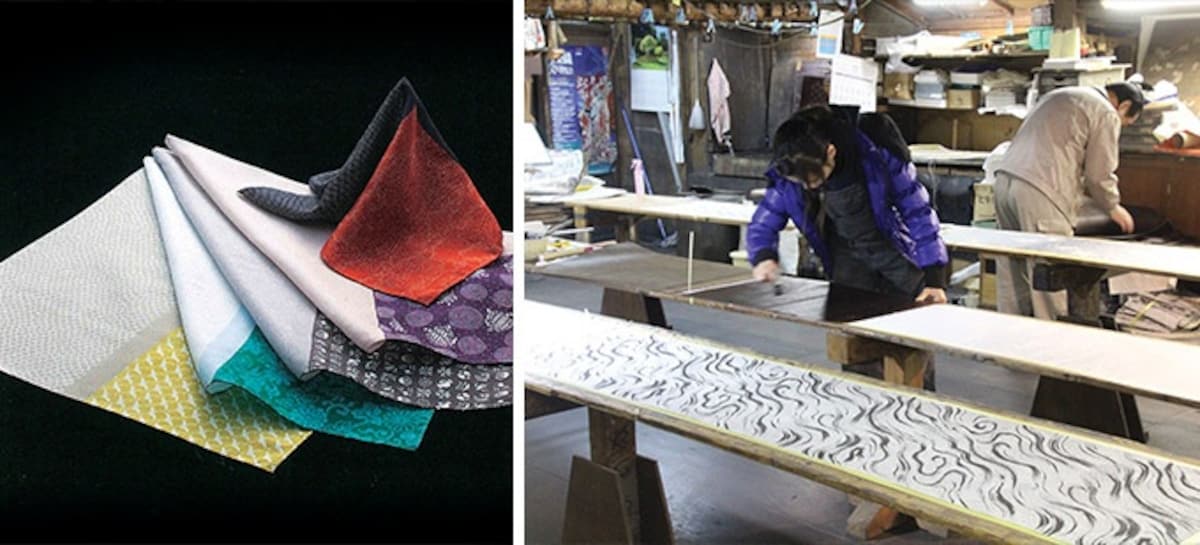Dyeing Technique Originated with Edo Lords
Along with Kyoto and Kanazawa, Tokyo is one of Japan’s three major traditional kimono-dyeing regions. Shinjuku’s Tomita Somekogei has been passing on traditional techniques and is a veteran purveyor of the Tokyo Some Komon style of cloth. Atsushi Tomita, the CEO of the company as well as director for the All-Japan Kimono Promotion Association, explains the appealing aspects of Tokyo Some Komon.
“You might ask why kimono dyeing is one of the local industries for a metropolis like Tokyo,” Tomita says. The origins of it go back to the feudal era system of daimyo rotation in Edo, in which lords from each feudal domain were obliged by the Tokugawa shogunate to make periodic visits to the capital. When these lords from across Japan gathered in Edo, they wore kamishimo, formal clothes for males in that era. To distinguish themselves from each other, they began to embroider family crests—komon—on their kamishimo. That is said to be the beginning of Edo Komon. Later, this concept of small, repeating patterns spread to the masses.
Today’s Tokyo Some Komon is categorized into “Edo Komon” and “Tokyo Oshare Komon,” but both use paper patterns to dye the cloth. Edo Komon uses monochrome dyeing with fine patterns, while Tokyo Oshare Komon has much larger, multicolored motifs.




